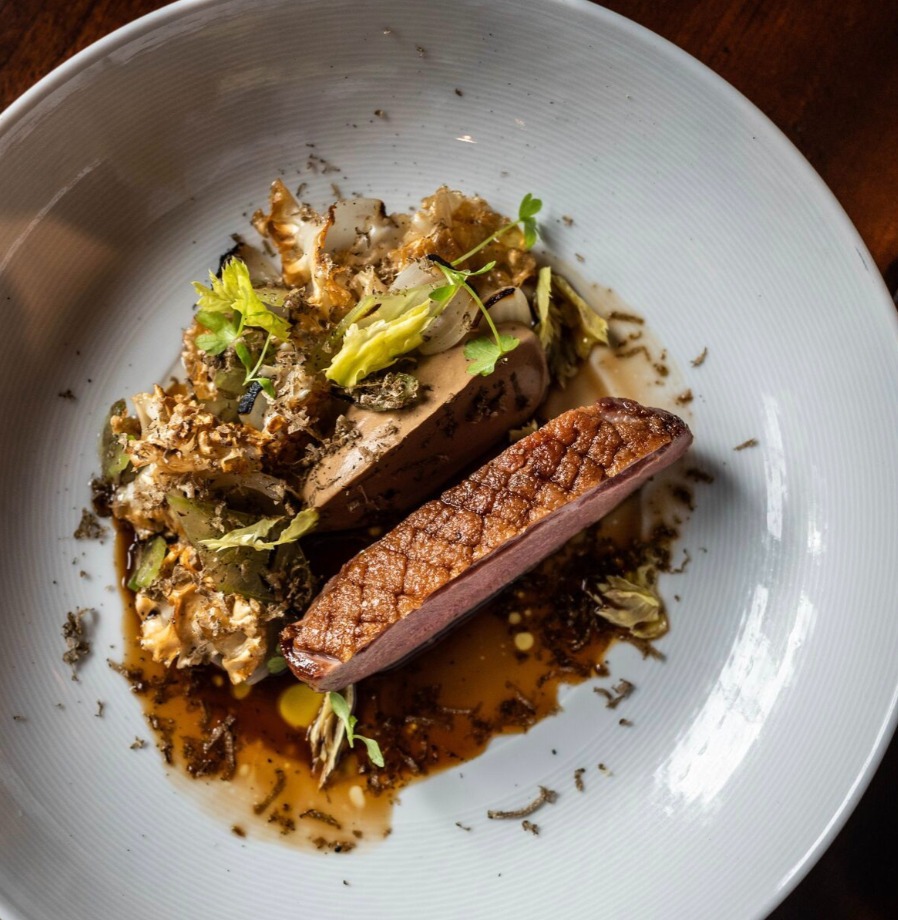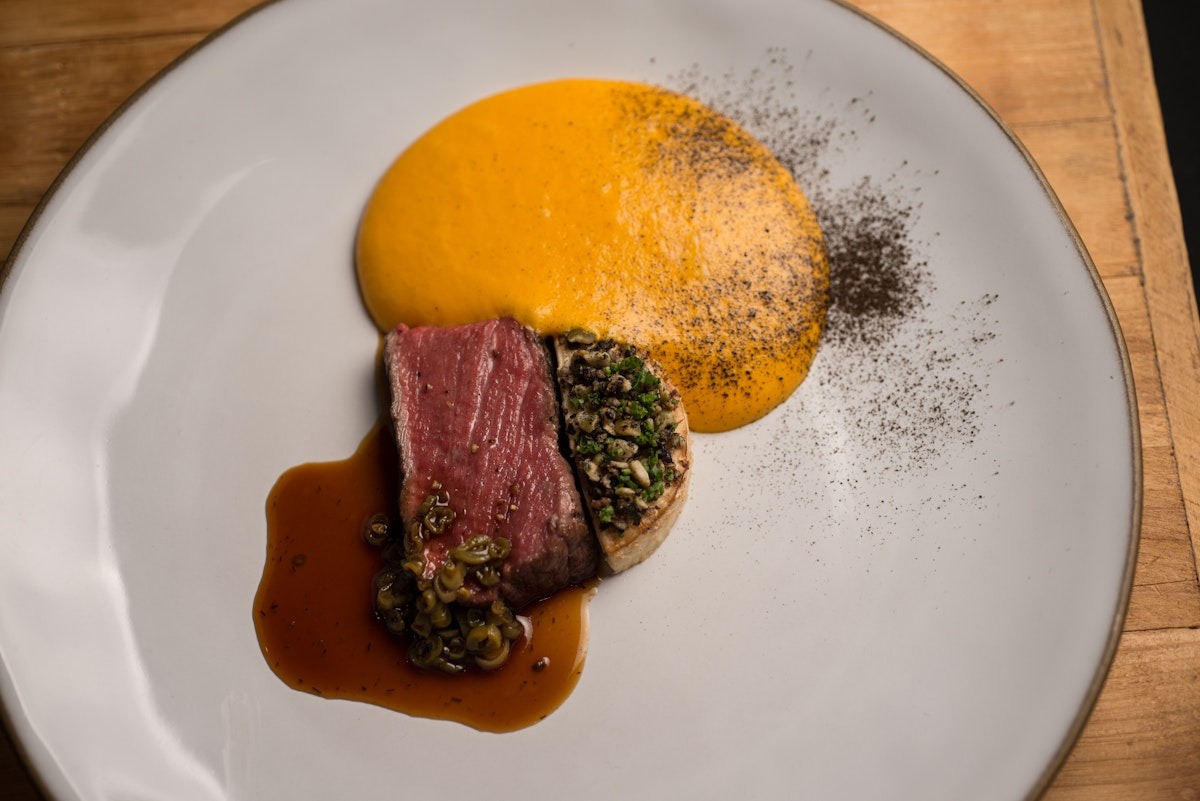When it comes to enjoying a great meal, there’s something special about knowing the ingredients were grown or raised just down the road. Farm-to-table restaurants take that connection to the next level, creating dishes that highlight the freshest local produce and sustainable practices. The U.S. is home to some truly historic spots that have been pioneering this movement for decades. Here’s a look at some of the oldest farm-to-table restaurants that continue to champion local flavors, each with its own unique history and style.
Contents
- 1 White Horse Tavern – Newport, Rhode Island (1673)
- 2 Old Homestead Steakhouse – New York, New York (1868)
- 3 Keens Steakhouse – New York, New York (1885)
- 4 The Barn at Blackberry Farm – Walland, Tennessee (1976)
- 5 The Restaurant at Patowmack Farm – Lovettsville, Virginia (1986)
- 6 Mustards Grill – Napa Valley, California (1983)
- 7 The Herbfarm – Woodinville, Washington (1986)
- 8 The Painted Lady – Newberg, Oregon (2005)
- 9 Husk – Charleston, South Carolina
- 10 Earth at Hidden Pond – Kennebunkport, Maine
- 11 Farm & Table – Albuquerque, New Mexico
- 12 The Elkridge Furnace Inn – Elkridge, Maryland
- 13 Sylvan Table – Sylvan Lake, Michigan
- 14 24 Carrot Bistro – Erie, Colorado
- 15 Odd Duck – Austin, Texas
- 16 More From RetailShout
- 17 10 Simple Ways to Create a More Sustainable Kitchen
- 18 10 Amazing Food Hacks for an Unforgettable Camping Trip
White Horse Tavern – Newport, Rhode Island (1673)

As America’s oldest operating restaurant, White Horse Tavern has been serving guests since 1673. The colonial-era building retains its historic charm with fireplaces and wooden beams, while the menu highlights fresh seafood from Narragansett Bay and locally sourced produce. White Horse is a pioneer in blending tradition with contemporary farm-to-table dining, using ingredients harvested from nearby farms. Dining here is a historical experience that takes you back to the 17th century, with a focus on seasonal freshness.
Old Homestead Steakhouse – New York, New York (1868)

The Old Homestead Steakhouse has been serving fine cuts of meat since 1868 in the same location in Manhattan. Their dedication to local sourcing, especially of meats, aligns with the farm-to-table movement, ensuring the freshest ingredients. The restaurant offers classic steakhouse fare, with a focus on sustainably sourced meats and produce from nearby farms. Its longevity speaks to the quality and consistency of its offerings.
Keens Steakhouse – New York, New York (1885)

Keens Steakhouse, opened in 1885, is renowned for its legendary mutton chops, now made with locally sourced lamb. The restaurant has committed to sustainable practices by purchasing from regional suppliers. Keens’ farm-to-table philosophy is reflected in its ever-evolving menu, which stays true to traditional cuts while emphasizing freshness and locality. Its iconic status in New York dining is enhanced by its history and dedication to quality.
The Barn at Blackberry Farm – Walland, Tennessee (1976)

Blackberry Farm’s restaurant, The Barn, has become synonymous with fine farm-to-table dining since its inception in 1976. Located on a 4,200-acre farm, the restaurant sources its ingredients directly from the estate’s gardens, orchards, and dairy. Executive Chef Joseph Lenn leads a team that utilizes indigenous Appalachian ingredients, creating seasonal menus that highlight the best of local produce, meats, and cheeses.
The Restaurant at Patowmack Farm – Lovettsville, Virginia (1986)

Since 1986, The Restaurant at Patowmack Farm has focused on biodynamic farming, ensuring sustainable and organic practices. The farm-to-table menu changes daily based on the harvest, emphasizing the freshest produce, meats, and fish. Situated on one of Virginia’s certified organic farms, the restaurant offers a rustic dining experience with a focus on environmental stewardship and seasonal dishes.
Mustards Grill – Napa Valley, California (1983)

Established in 1983 by chef Cindy Pawlcyn, Mustards Grill is a landmark in the farm-to-table scene in Napa Valley. The restaurant grows about 20% of its produce in its own gardens, using compost and natural fertilizers. Its commitment to sustainability is evident in dishes that feature seasonal vegetables like beets and purple potatoes, sourced directly from the restaurant’s gardens or neighboring farms.
The Herbfarm – Woodinville, Washington (1986)

The Herbfarm has been a pioneer in farm-to-table dining since 1986, operating on a sustainable farm and working closely with local foragers, farmers, and fishermen. The restaurant’s 9-course menus change with the seasons, using herbs and produce grown on-site. Known for its creative use of local ingredients, The Herbfarm offers an immersive farm-to-table experience.
The Painted Lady – Newberg, Oregon (2005)

Located in Oregon’s wine country, The Painted Lady serves locally sourced cuisine in a beautifully restored Victorian house. The farm-to-table ethos is reflected in its daily-changing menu, which uses the freshest seasonal ingredients from surrounding farms and vineyards. The charming setting and dedication to quality have made it a favorite since its opening in 2005.
Husk – Charleston, South Carolina

Sean Brock opened Husk in 2010, redefining Southern cuisine with a strict focus on ingredients sourced from south of the Mason-Dixon Line. Brock’s dedication to preserving nearly forgotten heirloom grains and legumes has made Husk a beacon of the farm-to-table philosophy. The restaurant’s menu changes daily, depending on what local farmers and purveyors have available. Each dish celebrates Southern traditions, with an emphasis on flavor over novelty. Husk’s approach continues to inspire restaurants across the South.
Earth at Hidden Pond – Kennebunkport, Maine

Earth at Hidden Pond, nestled in the woods of Maine, offers a rustic yet refined dining experience. Opened in 2011, the restaurant utilizes produce from its on-site organic gardens and partners with local foragers and farmers. Dishes such as ricotta gnudi and mushroom toast with black truffle celebrate the earthy flavors of New England. The restaurant’s serene setting and farm-fresh ingredients have made it a destination for those seeking a true farm-to-table experience.
Farm & Table – Albuquerque, New Mexico

Founded in 2012, Farm & Table is built on a deep respect for the land and community. The restaurant sources its ingredients from its 11-acre farm, ensuring that every dish reflects the flavors of New Mexico. Owner Cherie Montoya is passionate about using food to connect people with the land, and the menu changes seasonally to showcase what’s fresh and available. Farm & Table also plays a role in supporting local artists and non-profit organizations, further rooting itself in the Albuquerque community.
The Elkridge Furnace Inn – Elkridge, Maryland

This historic restaurant, situated in a building dating back to 1744, embraces a farm-to-table philosophy by growing produce in its on-site garden. Since the early 1990s, The Elkridge Furnace Inn has served dishes that incorporate fresh, local ingredients, from house-made gnocchi to smoked bacon. The restaurant’s historical roots and commitment to sustainable farming practices make it a unique destination for diners who value history and fresh, farm-driven cuisine.
Sylvan Table – Sylvan Lake, Michigan

Housed in a 300-year-old barn, Sylvan Table emphasizes global cuisine made from locally sourced ingredients. Opened in 2020, this farm-to-table restaurant grows much of its produce on-site and collaborates with local purveyors. Popular menu items include roasted oysters with apple slaw and ginger black rice trout. Sylvan Table’s commitment to sustainability and community is evident in every dish, making it a standout destination in Michigan’s culinary landscape.
24 Carrot Bistro – Erie, Colorado

Opened in 2015, 24 Carrot Bistro is deeply rooted in the Colorado farming community. The restaurant is passionate about sourcing fresh, seasonal ingredients from local farms across the state. Their menu reflects Colorado’s rich agricultural heritage, featuring dishes made with non-GMO ingredients and herbs from a nearby greenhouse. Seafood is flown in daily to ensure the freshest quality, while other proteins are locally sourced. The restaurant’s commitment to sustainability has earned it awards like “Best of the West” and “Best New Restaurant.” Its dedication to farm-to-table principles makes it a staple in Colorado dining.
Odd Duck – Austin, Texas

Odd Duck started as a food trailer in 2009 before transitioning into a brick-and-mortar restaurant in 2014. This Austin favorite focuses on seasonal, locally sourced ingredients to create its ever-evolving menu. The restaurant’s relationship with local farmers is at the heart of its farm-to-table ethos, offering a vegetable-forward menu that also caters to meat lovers. Dishes change frequently to reflect what’s available from local farms. Odd Duck has earned a reputation for its creative and sustainable approach to cooking, serving as an example of Texas’s rich farm-to-table culture.
This article originally appeared on RetailShout.
More From RetailShout
14 Trader Joe’s Recipes Using Seasonal Produce

When it comes to cooking, nothing beats fresh, seasonal produce—especially when you can grab it at Trader Joe’s! Good thing you can, and they also have the perfect recipes to match. Read More.
10 Simple Ways to Create a More Sustainable Kitchen

A sustainable kitchen is more than a collection of green gadgets; it’s a lifestyle that embraces efficiency and environmental responsibility. Simple adjustments in daily habits can significantly reduce your carbon footprint. Read More.
10 Amazing Food Hacks for an Unforgettable Camping Trip

Camping doesn’t mean you have to sacrifice good food and flavors.Whether you’re a seasoned camper or a newbie, these tips will make your campfire cooking a breeze. Dive in and discover how to transform your campsite kitchen into a gourmet experience! Read More.






